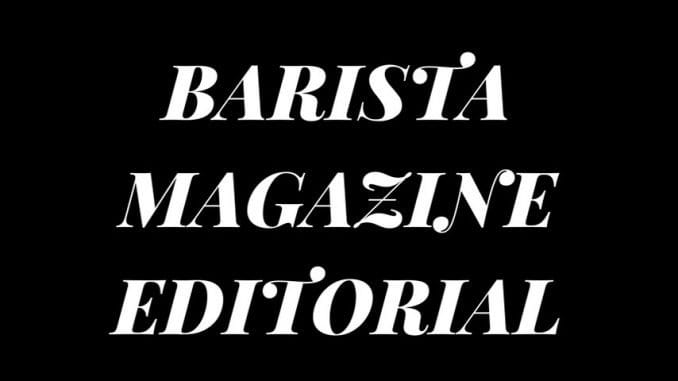
We ask the question: Where are all the female competitors? What does that question imply, and who are we overlooking when we focus solely on gender?
BY ASHLEY RODRIGUEZ
BARISTA MAGAZINE ONLINE
At the Austin CoffeeChamps February 12-13, women took half of the top six spots (first, second, and fourth) in the barista portion of the competition. Being in the top six means not just a photo-op, but a bye into the semi-finals round of the United States Barista Championship (USBC), to take place in April in Seattle in conjunction with the Global Specialty Coffee Expo. As the fourth-place finisher, I received a lot of kind words from fellow coffee folks. But almost immediately after a congratulatory sentiment, I would then hear: “At least half of the top six were women.”
This is both a promising and confusing sentence. It’s promising because this hasn’t happened very often in specialty-coffee competitions. Yes, women have won regional competitions in the past, and almost half of our past American barista champions have been women, but it is very rare to see that many women in the top spots. At the Knoxville qualifying event held January 21-22, only one of the top six in the barista competition event was a woman. That’s what happened at the 2016 USBC, too. At the 2015 USBC, all six finalists were men. Looking at these numbers, it seems like the Austin CoffeeChamps event represents a huge jump into a more equitable, gender-balanced competition atmosphere.
And yet, that sentence—“at least half of the top six were women”—is incredibly confusing and mars the rest of the results of the competition. In Austin, while half of the top six finishers were women, only five out of the top 18 were women. In Knoxville, only four out of the top 18 were women. That’s far from half. And to point to the top six being female, using that as a sign that gender equity is fixed, and we no longer need to work on underrepresentation of women in competition—that is misleading and dangerously incorrect. Likewise, to comment on the gender of the top finishers completely ignores not just that none of the top finishers were black or brown or of any different skin color, but that very few black and brown people competed to begin with.
I’ve been pretty outspoken on the topic of gender representation on social media and in my personal writing, and a few people have reached out to me about why I think our industry suffers from an underrepresentation problem—not just in competition, but in cafes, in leadership positions, and even in coffee media. The question usually goes like this: “Why aren’t there more women or minority competitors/managers/writers?” It’s something I struggle with as well: When I look around and the field doesn’t look the way I want it to, I have to ask, why aren’t people showing up? What’s keeping them from being involved in events or from participating in higher leadership positions?
As an editor, I realized that the solution wasn’t to ask why people aren’t showing up, but to ask myself: What am I doing about this? What systems are in place that make people stay away? What can I do to invite and encourage more people to participate? It’s something I had to think critically about when I look at the freelance writers who contribute to Barista Magazine Online and the stories we have covered here, and it’s something I believe coffee business owners need to consider when they set out to build a diverse staff. To place the onus of representation on the group of people who are themselves being underrepresented is to ascribe a trait or mode of thinking to the entire group. We cannot simply say that women are less competitive, for example, because we know not all women are the same, and to make a blanket statement like that means we leave behind the women who do want to compete and who do want to be leaders.
Instead, how about we pose this question to individuals rather than entire groups? Ask yourself: What can I do to make things better? How am I culpable for the coffee culture around me? If women aren’t applying to work for your company, it’s not that all women decided not to work for you—it’s that you’re doing something that is either deterrent or inhospitable to women, and it’s your responsibility to figure out how to amend that.
So let’s go back to the original question: How do we increase representation of women and minorities? We make it a priority. In a recent interview I did with Keba Konte of Red Bay Coffee, he mentioned that once you make diversity a priority, and really think about what that means, then it’s not that difficult to make it a reality. But it does involve active participation and stepping out of what he calls “the echo chamber,” where you meet the same people (who are probably a lot like you) and hear the same ideas. If you want to employ a more diverse staff, putting a job ad on coffee media isn’t going to achieve that—that’s just posting to the echo chamber.
Diversity requires active participation. Talk to the women on your staff and encourage them to compete—don’t simply ask your staff blindly in an email in the guise of “fairness” to everyone. It’s very likely that the female members of your staff feel ignored or passed over, so if you’re concerned about creating an equitable work environment, ask questions and build support. The same goes for members of other marginalized groups. We all like to think we’re approachable and care about the well-being of each of our staff members, but it’s easy to identify with people who look like us, have the same opinions we do, or remind us of ourselves when we were younger. As leaders, we have to step outside of that and find ways to support everyone, taking it upon ourselves to create the environment we wish to see.

